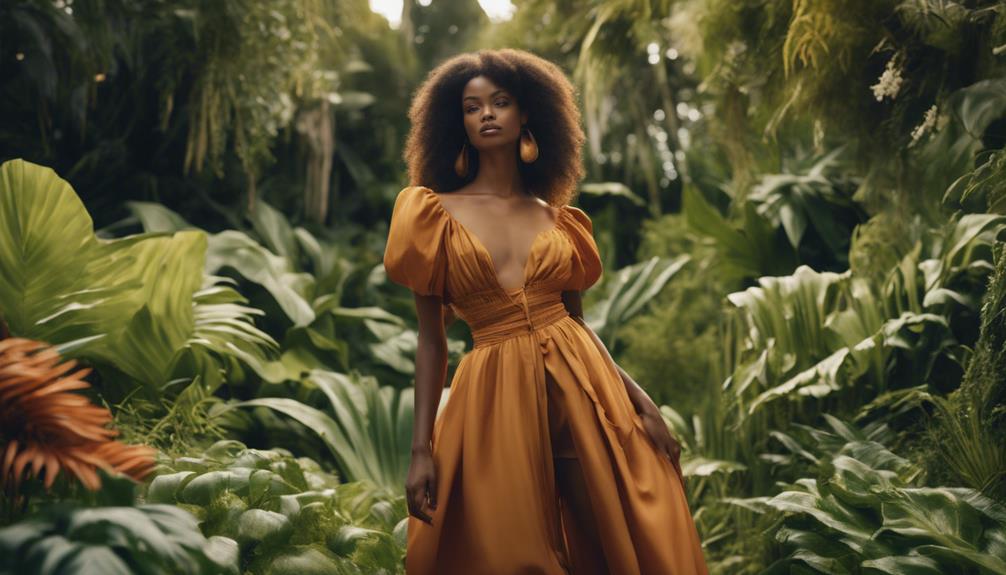Absolutely, sustainable fashion and inclusive sizing can coexist! More brands are recognizing the significant demand from the 68% of American women who wear sizes 14 and above. While challenges like financial constraints and fabric limitations exist, innovations like AI-managed production and community engagement are paving the way. Brands that collaborate and share resources can address these hurdles, making fashion accessible for diverse body types. As consumers increasingly demand ethical practices, you’ll find brands that rise to these expectations. For more insights into how the industry is evolving and succeeding, keep exploring what’s happening in sustainable and inclusive fashion!
Key Takeaways
- Sustainable fashion can incorporate inclusive sizing by leveraging technological innovations like AI-managed production to reduce waste and enhance fit.
- Collaborative strategies among brands can pool resources, enabling the development of size-inclusive collections while maintaining sustainable practices.
- Demand for ethical and inclusive fashion is rising, with consumers willing to pay more for brands that prioritize sustainability alongside diverse sizing.
- Successful case studies demonstrate that engaging communities in design and fitting processes fosters loyalty and effective size range expansions.
Current State of Sustainable Fashion
Currently, sustainable fashion struggles to meet the diverse sizing needs of consumers, with less than 20% of its offerings available in above-average sizes. This gap highlights a significant issue for those seeking eco-friendly options in plus sizing.
Despite the plus-size womenswear market being valued at approximately €140 billion in 2017 and projected to reach €170 billion, sustainable fashion brands often fall short in addressing this substantial consumer demand.
You might notice that the average Western woman typically wears a size 16, yet many sustainable brands cater primarily to sizes 0 to 8. This discrepancy raises questions about their commitment to size inclusivity. While some brands are enthusiastic to embrace a more diverse audience, they often face internal challenges, such as limited resources and the complexities of producing a wider range of sizes.
The ongoing dilemma of balancing sustainable practices with inclusive sizing remains unresolved, as brands struggle to integrate both principles effectively into their business models. As a consumer, you deserve options that reflect your size and values, and it's essential for sustainable fashion brands to recognize this need and act accordingly.
Definition of Inclusive Sizing
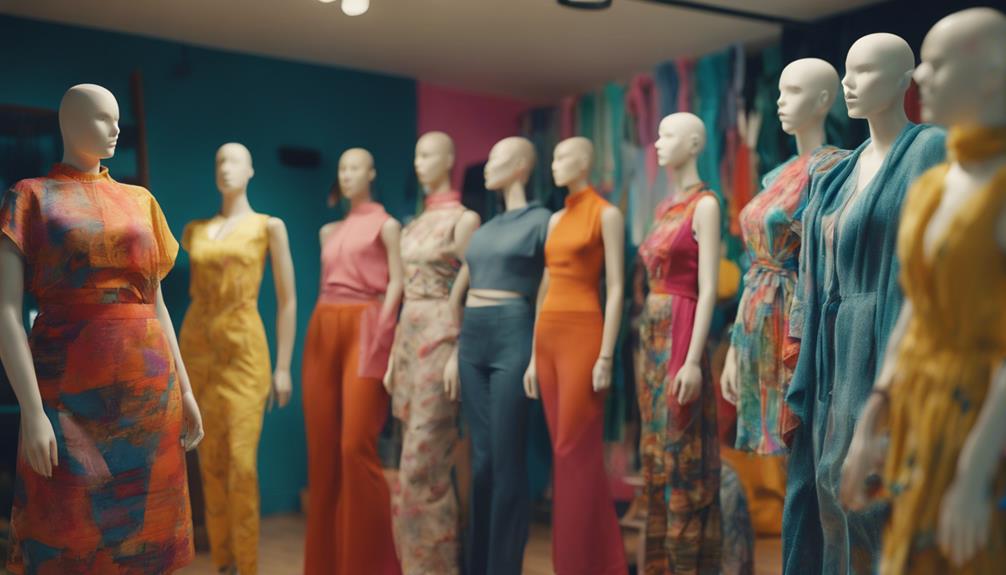
Inclusive sizing means offering a wide range of sizes that cater to various body types, ensuring everyone can find fashionable options that fit and flatter. This approach goes beyond the traditional 3-6 sizes, which often leaves many individuals struggling to find clothing that suits them. By embracing inclusive sizing, brands tap into a broader consumer base, enhancing customer satisfaction and loyalty.
Research shows that the plus-size market alone is worth over €170 billion, highlighting the demand for more size options. Inclusive sizing not only meets the needs of plus-size individuals but also promotes representation for demographics like transgender and disabled persons. Fashion becomes more accessible and sustainable when it acknowledges the diversity of body shapes and sizes.
To stay competitive in today's market, brands must adapt to consumer expectations for inclusivity. This shift is essential for creating a fashion landscape that reflects the reality of diverse body types. Ultimately, inclusive sizing empowers everyone to express themselves through fashion, making it a crucial part of the sustainable movement.
Embracing this definition of inclusive sizing helps pave the way for a more equitable and fashionable future for all.
Challenges in Size-Inclusive Fashion
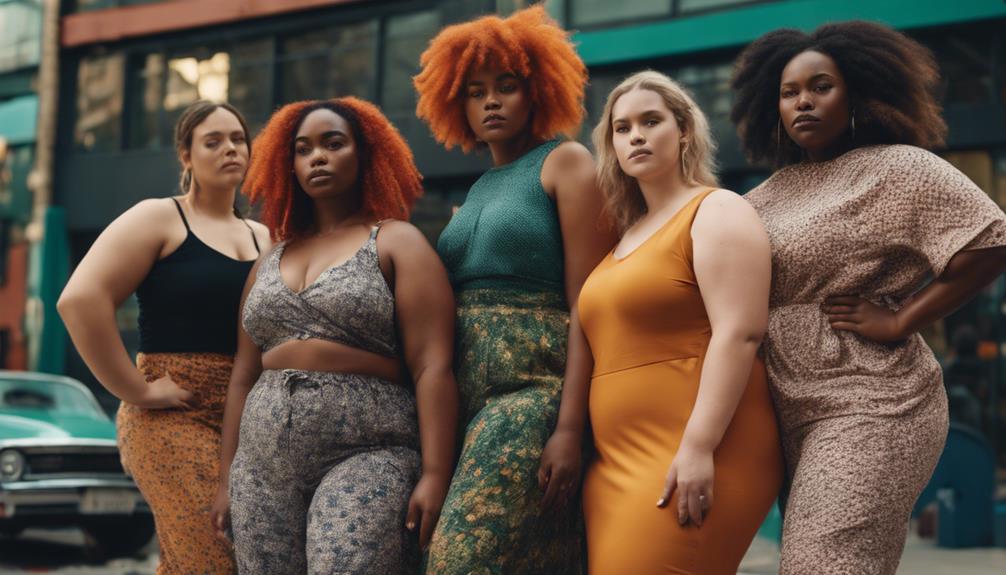
When you think about size-inclusive fashion, you quickly realize that brands face several challenges.
Financial constraints can limit their ability to expand size offerings, while fabric choices often don't align with sustainable practices.
Plus, the design complexities involved in creating clothing for diverse body types make it even harder to achieve true inclusivity.
Financial Constraints on Brands
Many brands struggle to stretch their budgets to accommodate the necessary investments in expanding size ranges, leaving them hesitant to embrace size-inclusive fashion. The financial constraints they face often stem from the significant upfront costs associated with new fittings, patterns, and design changes.
Many sustainable brands operate with lower profit margins, making it challenging to allocate resources for extended sizing without jeopardizing their financial stability. When these brands attempt to offer extended sizes, they frequently encounter cost pressures due to factory minimums. This leads to limited production runs, ultimately resulting in excess inventory issues for larger sizes.
The perception of low demand for larger sizes further complicates matters, creating a self-fulfilling prophecy. Brands hesitate to invest in inclusive sizing, fearing poor sales, even when evidence suggests a substantial market exists for plus-size consumers.
To truly embrace size-inclusive fashion, brands must overcome these financial challenges. They need to rethink their approach and recognize that addressing the needs of all consumers, including those seeking extended sizing, can lead to a more sustainable and profitable future.
Fabric Limitations and Sustainability
How do fabric limitations impact the sustainability of size-inclusive fashion?
When it comes to inclusive sizing, the choice of fabric plays an essential role. Many sustainable fashion brands rely on stretchy fabrics for larger sizes, but this often means using synthetic materials that contradict eco-friendly practices. You're likely aware that these materials can undermine the very principles of sustainability.
Moreover, accommodating a broader range of sizes requires significant upfront investment in new fittings, patterns, and design changes. This complexity can make it harder for sustainable brands to manage their production processes efficiently.
With the increased variability in sizing, brands face additional risks, especially since sustainable fashion typically operates on smaller profit margins and lower economies of scale.
Unfortunately, many sustainable brands lack the resources to adapt their production to include extended sizing, further limiting their ability to offer inclusive options. The commitment to low-waste production methods also complicates matters, as these often favor producing fewer sizes to minimize waste.
Ultimately, these fabric limitations create significant challenges for merging sustainable fashion with inclusive sizing, leaving you to wonder how these two vital aspects can truly coexist.
Design Challenges for Inclusivity
Designing for size inclusivity presents significant hurdles, as creating new patterns and grading systems often overwhelms even experienced design teams. The industry's traditional focus on singular body types complicates efforts to embrace diverse sizing.
Here are three major design challenges you might encounter:
- Pattern Development: Adapting existing designs for a broader range of body types requires new patterns, which can be time-consuming and costly.
- Grading Complexity: The intricacies of grading for various sizes demand specialized skills and knowledge that many designers lack, leading to a gap in education within the fashion industry.
- Resource Limitations: Smaller brands often struggle to allocate the necessary time and finances to implement inclusive sizing, while larger brands may find it difficult to integrate diverse sizing smoothly into their production processes.
These design challenges underscore the need for a shift in approach, prioritizing size inclusivity in fashion. By investing in education and resources, the industry can better accommodate diverse body types, ultimately leading to more size-inclusive fashion options for everyone.
Barriers to Sustainable Practices

What challenges do brands face when trying to integrate inclusive sizing into sustainable fashion practices? The barriers are quite significant, impacting both the fashion industry and consumers. First, there's a financial hurdle; brands often operate on smaller profit margins, making it tough to invest in new patterns and fittings for inclusive sizing. Additionally, the reliance on stretchy fabrics can lead to synthetic materials, which contradicts sustainable practices.
Here's a quick overview:
| Barrier | Impact on Sustainable Fashion | Effect on Inclusive Sizing |
|---|---|---|
| Financial Constraints | Limits investment in size range | Reduces accessibility for larger consumers |
| Material Choices | Often leads to synthetic fabrics | Conflicts with sustainability goals |
| Production Complexity | Hard to track sustainable practices | Makes size inclusivity challenging |
These challenges create a gap in the availability of sustainable fashion items in above-average sizes. Less than 20% of sustainable fashion options cater to larger consumers, highlighting the need for brands to rethink their strategies to guarantee both sustainability and inclusivity can coexist.
Consumer Trends and Expectations
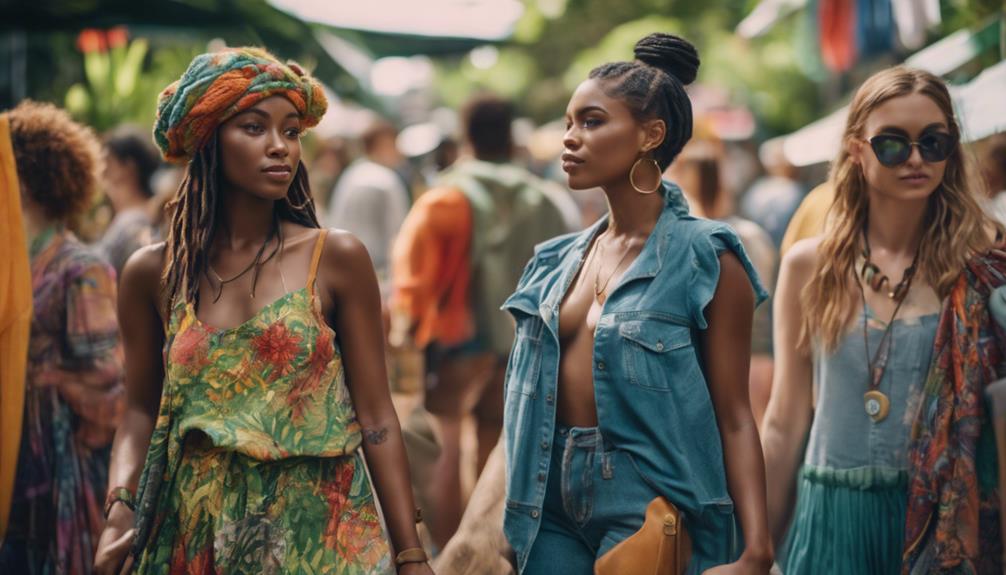
As a consumer, you're likely noticing a shift in priorities towards sustainability and inclusivity in fashion.
You expect brands to be transparent about their sourcing and production processes, and you want options that cater to all body types.
This growing demand is reshaping the industry, pushing brands to adapt to your expectations.
Evolving Consumer Priorities
Consumers are increasingly demanding sustainable fashion that embraces inclusivity, reflecting a significant shift in their priorities and expectations.
You want brands to not only adopt eco-friendly practices but also to expand their range of sizes. This is vital for a more diverse customer base that values both sustainability and body diversity.
Here are three key factors driving these evolving priorities:
- Sustainability is Key: You're looking for brands that prioritize ethical practices and environmental responsibility. This influences your loyalty and purchasing decisions.
- Inclusivity Matters: With 68% of American women wearing sizes 14 and above, it's clear that brands need to offer a wider range of sizes. This inclusivity is a vital expectation for today's consumers.
- Social Media Impact: Platforms amplify voices advocating for diversity and sustainability, pushing brands to adapt. You're more likely to support companies that respond to these social trends.
Demand for Transparency
The growing emphasis on sustainability and inclusivity has led you to expect greater transparency from fashion brands regarding their sourcing, production practices, and size options. Today's consumers demand clear information, and research shows that 66% want to know how their clothes are made, while 73% are willing to pay more for ethically produced items.
Social media fuels these expectations, with 57% of shoppers more likely to support brands that openly share their sustainability efforts. Additionally, 62% of Gen Z and millennials would switch brands for better size inclusivity, demonstrating the need for brands to communicate their size options clearly.
Here's a snapshot of consumer expectations:
| Consumer Expectations | Percentage |
|---|---|
| Want to know clothing sourcing | 66% |
| Willing to pay more for ethical practices | 73% |
| Prefer brands sharing sustainability efforts | 57% |
| Would switch for better size options | 62% |
| Buy from brands prioritizing sustainability and inclusivity | 58% |
Innovations in Sustainable Fashion

Innovative technologies in sustainable fashion are transforming how brands approach production, enabling personalized sizing and reducing waste simultaneously. By harnessing advancements in AI and eco-friendly practices, brands can offer inclusive sizing while committing to sustainability.
Here are three key innovations reshaping the industry:
- Custom Sizing Models: Brands are adopting AI-managed production, allowing them to create personalized fits without overproducing inventory. This guarantees that you get the right size while minimizing waste.
- Natural Fabrics: The shift towards natural fabrics over synthetic materials is gaining momentum. These eco-friendly options not only align with sustainable fashion principles but also cater to the demand for extended sizing.
- Small-Batch Production: By focusing on small-batch production methods, brands can reduce their environmental impact and create more inclusive offerings. This approach enables a diverse size range while maintaining quality.
Collaboration among brands is essential in this evolution. By sharing knowledge and practices, they can enhance production processes and make sustainable, size-inclusive fashion accessible to everyone.
Embracing these innovations means you can enjoy stylish, eco-conscious clothing that fits you perfectly.
Role of Secondhand Fashion
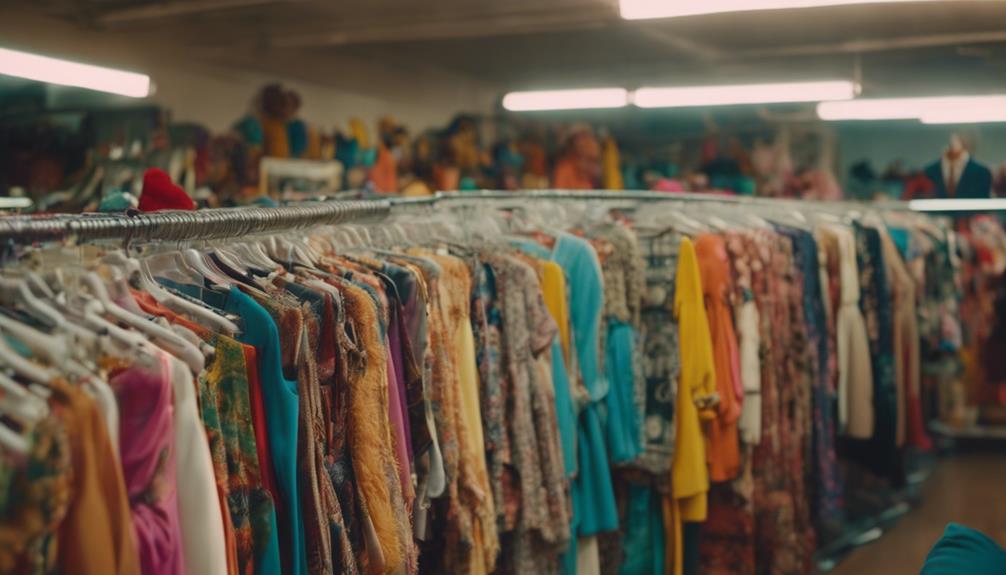
Embracing secondhand fashion offers a sustainable and budget-friendly way to shop while contributing to a circular economy. As you explore secondhand options, you'll find that many brands, like Hackwith Design House and Eileen Fisher, have launched programs that promote sustainability by reducing waste. These initiatives not only support eco-conscious shopping but also create stylish choices for everyone, especially those seeking inclusive sizing.
The demand for fashionable, sustainable secondhand clothing is rising, particularly in extended sizes. This growing market addresses a significant gap for plus-size consumers, ensuring they've access to trendy, affordable options. Additionally, practices like upcycling and mending within the secondhand sector extend the lifespan of garments, further enhancing sustainability efforts and reducing landfill impact.
Moreover, custom sizing approaches in secondhand fashion can cater to individual fit needs, making the experience more inclusive. By choosing secondhand, you're making a conscious decision that promotes sustainability and supports an industry that values all body types.
The Future of Size Inclusivity
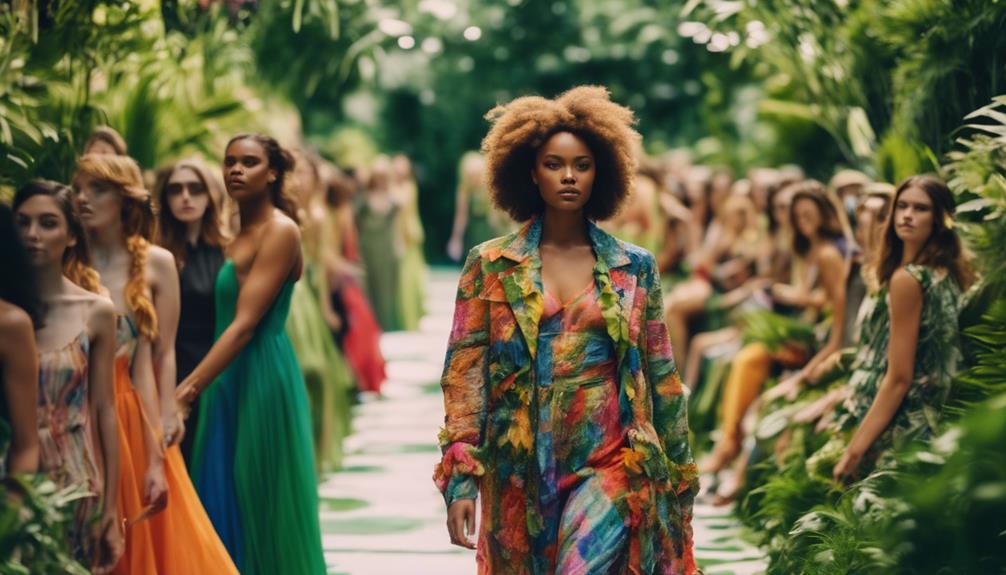
A growing focus on size inclusivity is reshaping the fashion landscape, offering brands a chance to connect with a wider audience while meeting the diverse needs of consumers. As the market for women's plus-size clothing approaches €170 billion, it's clear that there's a significant opportunity for brands offering diversified sizing options. Embracing body positivity and inclusive sizing is essential for long-term brand loyalty and relevance.
Here are three key strategies for the future of size inclusivity:
- Innovative Technologies: By utilizing AI-managed production and custom-sizing approaches, brands can enhance inclusivity while maintaining sustainable practices.
- Expanded Size Ranges: Retailers like H&M illustrate the growing demand for extended sizing, recently expanding their offerings up to 4XL to meet consumer needs.
- Community Engagement: Involving customers in the design process, as seen with successful brands, fosters loyalty and leads to effective size range expansions.
Case Studies of Success
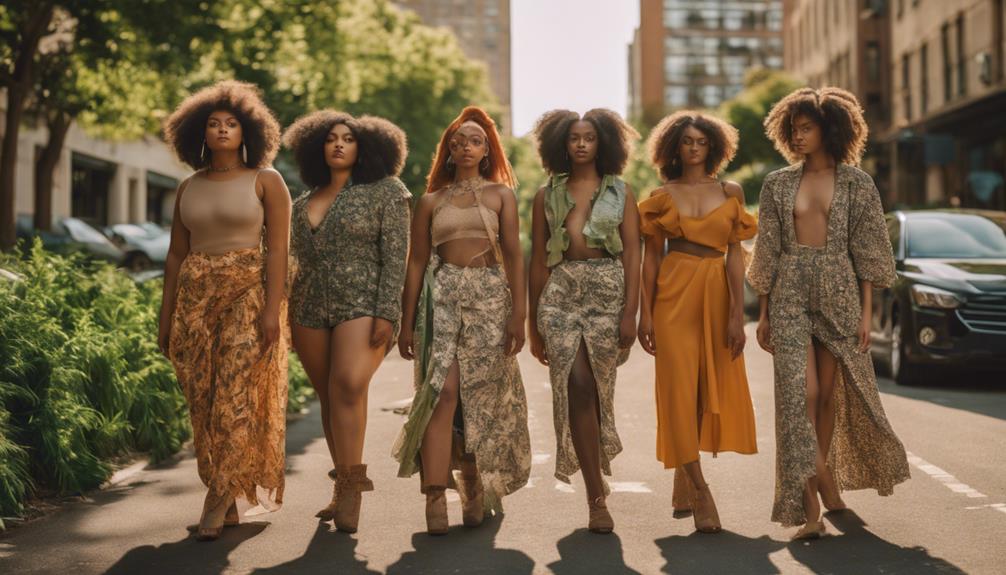
Successful brands like Anne Mulaire show how community engagement and inclusive sizing can lead to meaningful growth and customer loyalty. By involving over 100 women in fitting sessions, Anne Mulaire expanded its size offerings from XXS to 6X, creating a modern sizing chart that truly reflects diverse body types. This hands-on approach not only enhances the shopping experience but also guarantees that customers feel valued and understood.
To further support inclusive sizing, the brand developed custom measuring tapes, making it easier for customers to select their sizes accurately. Their commitment to just-in-time manufacturing practices allowed for tailored adjustments based on individual body shapes, demonstrating that sustainable practices can harmonize with inclusivity.
The positive response from customers showcases how prioritizing inclusivity fosters loyalty and creates a strong community around the brand. Other small brands can learn from Anne Mulaire's success, understanding that embracing diverse body representation isn't just a trend but a crucial standard in sustainable fashion.
Strategies for Brand Collaboration

Collaboration among sustainable fashion brands can drive innovation and create a stronger market presence for size-inclusive offerings. By joining forces, you can enhance the acceptance of diverse size ranges while remaining committed to ethical practices.
Here are three effective strategies for brand collaboration:
- Co-Designing Collections: Work together on new lines that reflect both sustainability and inclusivity. Sharing creative insights can lead to innovative designs that appeal to a broader audience.
- Pooling Resources: By combining production capabilities and knowledge, you can reduce costs associated with expanding size ranges. This approach allows for maintaining environmental responsibility while meeting consumer demand.
- Engaging the Community: Involve customers through fitting sessions and feedback loops. This engagement helps you gather valuable insights, leading to more accurate sizing and designs that resonate with a diverse consumer base.
Through these strategies, sustainable fashion brands can't only enhance their market presence but also foster consumer trust and loyalty. Collaboration isn't just beneficial; it's essential for creating a more inclusive and eco-friendly fashion industry.
Frequently Asked Questions
What Is the Problem With Sustainable Fashion?
Sustainable fashion struggles with accessibility due to limited size ranges, often catering to smaller sizes. This exclusion creates a disconnect, leaving many consumers feeling overlooked and reinforcing the perception that sustainable options aren't meant for everyone.
What Is Size Inclusivity in the Fashion Industry?
Size inclusivity in fashion means offering a wide range of sizes to cater to diverse body types. It addresses the needs of consumers beyond traditional limits, promoting body positivity and ensuring everyone feels represented and stylish.
Do People Really Care About Sustainable Fashion?
Did you know 83% of plus-size consumers spend less than their straight-size counterparts? You care about sustainable fashion, and brands are catching on. With rising awareness, it's clear many people prioritize eco-friendly, ethical choices in their wardrobe.
What Is Sustainable Fashion and Why Is It Important?
Sustainable fashion focuses on eco-friendly materials and ethical production, helping reduce environmental harm. It's important because it promotes responsible consumption, supports fair labor practices, and encourages long-lasting products, ultimately benefiting society and the planet.
How Does Sustainable Fashion Impact Inclusive Sizing?
Sustainable fashion in Singapore is driving the demand for inclusive sizing. Brands are embracing eco-friendly practices and offering a wider range of sizes to cater to diverse body types. This shift is promoting body positivity and inclusivity within the fashion industry, making sustainable fashion more accessible to all.
Conclusion
As the threads of sustainable fashion and inclusive sizing weave together, they create a vibrant tapestry that reflects our diverse society.
Embracing both ideals isn't just possible; it's essential for a brighter future.
By prioritizing inclusivity, brands can cultivate loyal communities and foster innovation.
Just like a well-tailored garment, when every piece fits, the whole ensemble shines.
Let's champion these changes, ensuring everyone finds their perfect fit in the world of fashion.
